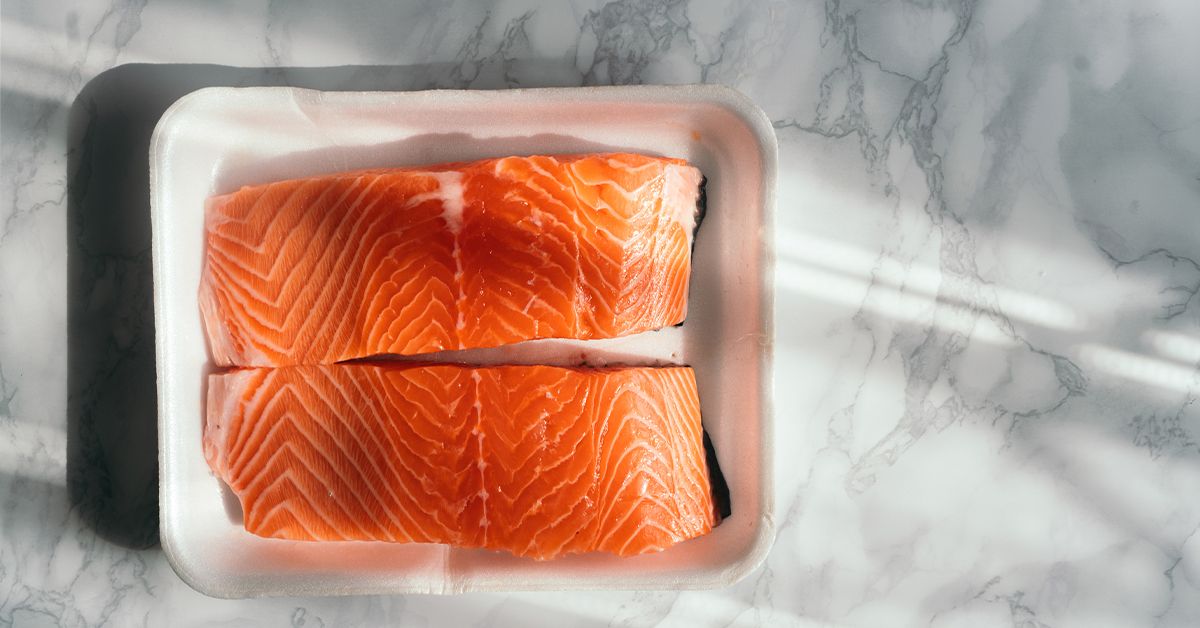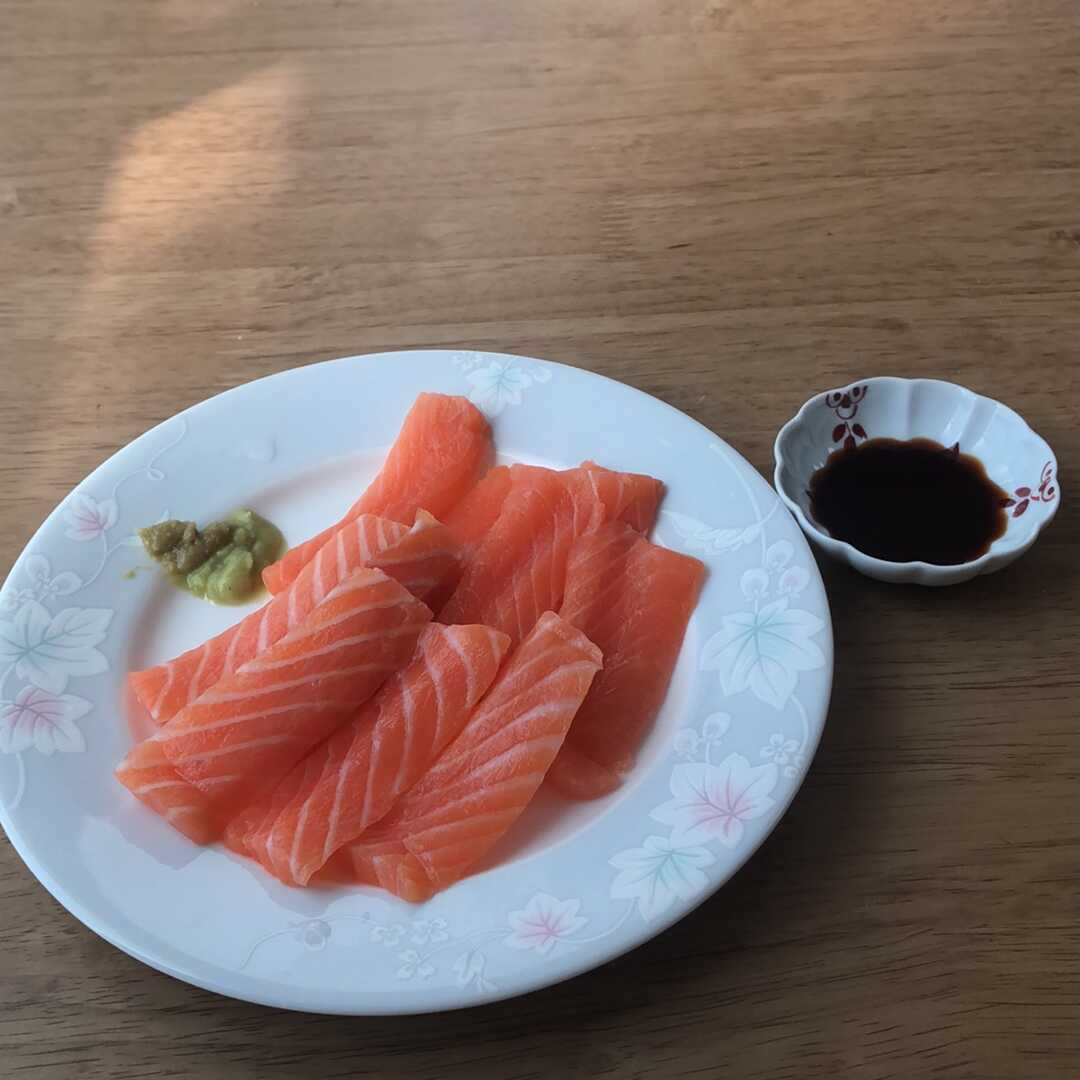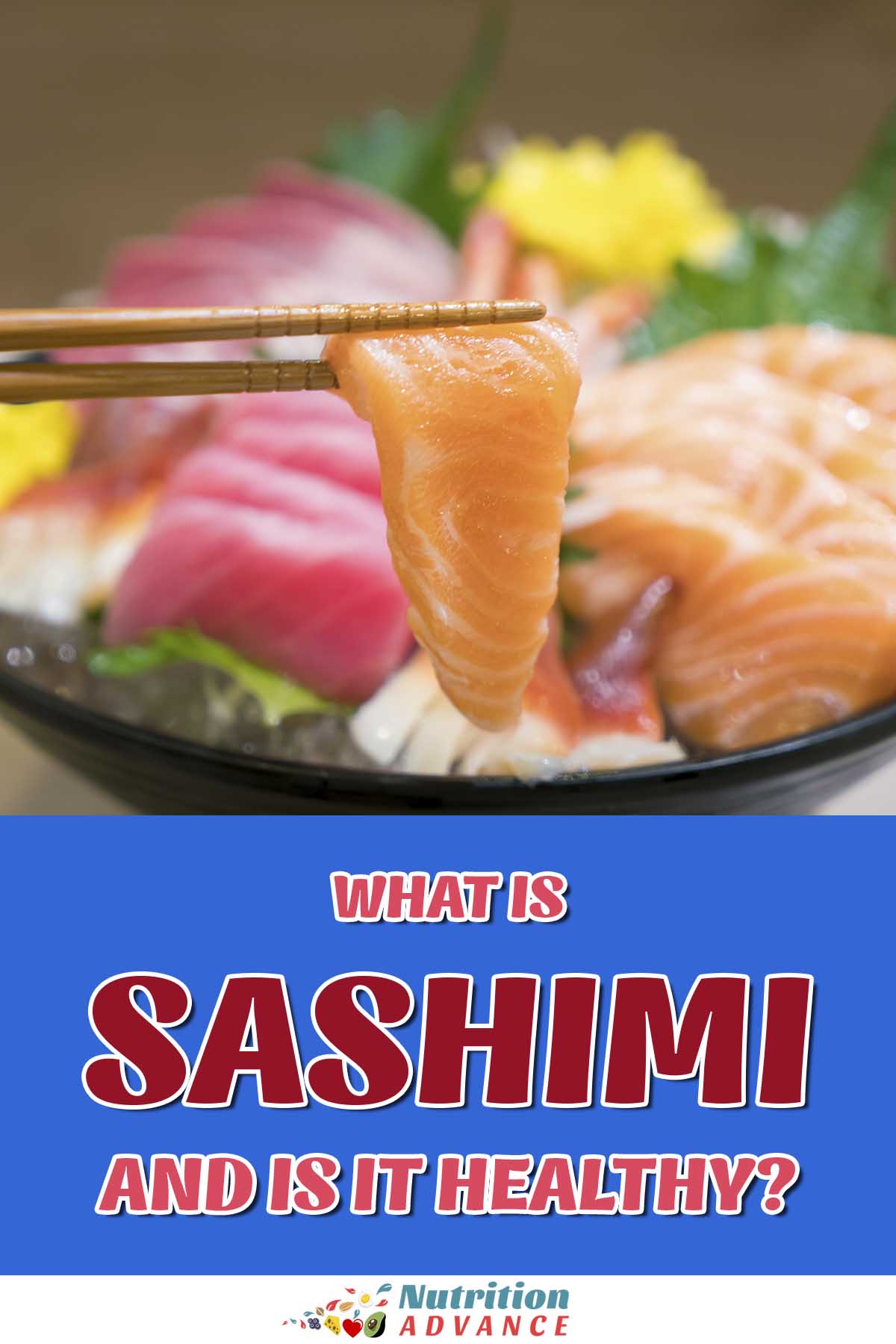Introduction

Salmon sashimi, a popular delicacy in Japanese cuisine, has gained immense popularity worldwide for its exquisite taste and unique texture. But apart from its culinary appeal, it is essential to understand the nutritional value of salmon sashimi. This knowledge can help individuals make informed choices about their dietary intake and reap the numerous health benefits that this dish offers. In this article, we will delve into the essential nutrients, vitamins, and minerals found in salmon sashimi, as well as explore its potential health benefits and associated risks. So let’s dive in and uncover the nutritional wonders of salmon sashimi!
The Popularity Of Salmon Sashimi
Salmon sashimi has gained immense popularity worldwide for its exquisite taste and unique texture. This delicacy is widely regarded as a culinary masterpiece and is a favorite among seafood enthusiasts. With its vibrant pink color and mouth-watering flavor, salmon sashimi has become a must-try dish for many. It is frequently featured in Japanese cuisine and has now made its way into menus of various international restaurants. Its growing popularity can be attributed to the increasing appreciation for fresh and healthy seafood options.
The Importance Of Understanding The Nutritional Value Of Salmon Sashimi
Understanding the nutritional value of Salmon Sashimi is crucial for making informed choices about our diet. This knowledge allows us to harness the health benefits that salmon sashimi offers. By knowing the specific nutrients it contains, such as high-quality protein and omega-3 fatty acids, we can incorporate it into a balanced and nutritious meal plan. Additionally, being aware of any risks or precautions associated with salmon sashimi helps ensure our safety and well-being. Overall, understanding the nutritional value of Salmon Sashimi empowers us to make healthier choices and optimize our overall health.
Essential Nutrients In Salmon Sashimi

Salmon sashimi is a nutritional powerhouse, packed with essential nutrients that support overall health. It is an excellent source of high-quality protein, providing about 20-25 grams per 100 grams of fish. This complete protein contains all nine essential amino acids in the right concentration, making it an ideal choice for protein intake. Additionally, salmon sashimi is rich in omega-3 fatty acids, which are beneficial for heart and brain health. These essential nutrients make salmon sashimi a valuable addition to a balanced and nutritious diet.
Protein Content In Salmon Sashimi
Salmon sashimi is a fantastic source of protein, providing about 20-25 grams per 100 grams of fish. It is a complete protein, meaning it contains all nine essential amino acids in the right concentration. Protein is essential for building and repairing tissues, as well as supporting a healthy immune system. Incorporating salmon sashimi into your diet can be a great way to increase your protein intake, especially for those who follow a vegetarian or plant-based diet. With its high protein content, salmon sashimi can be a nourishing and satisfying addition to any meal.
Omega-3 Fatty Acids In Salmon Sashimi
Salmon sashimi is an excellent source of omega-3 fatty acids. These essential fats are known for their numerous health benefits, including reducing inflammation, promoting heart health, and supporting brain function. Omega-3 fatty acids are also vital for maintaining healthy skin and hair. Eating salmon sashimi regularly can help increase your intake of these beneficial fats, as it contains high levels of docosahexaenoic acid (DHA) and eicosapentaenoic acid (EPA), two types of omega-3s that are particularly beneficial for our bodies. Incorporating omega-3-rich salmon sashimi into your diet can be a delicious way to support your overall well-being.
Vitamins And Minerals In Salmon Sashimi

Salmon sashimi is not only rich in protein and omega-3 fatty acids, but it also provides a good amount of vitamins and minerals. Here are some key vitamins and minerals found in salmon sashimi:
- Vitamin B12: Salmon sashimi is an excellent source of vitamin B12, which is essential for nerve function and the production of red blood cells.
- Selenium: Salmon sashimi is a good source of selenium, a mineral that acts as an antioxidant and helps support thyroid function.
- Potassium: Salmon sashimi contains potassium, which is important for maintaining healthy blood pressure and proper muscle function.
By including salmon sashimi in your diet, you can benefit from the various vitamins and minerals it offers, supporting overall health and well-being.
Vitamin B12 In Salmon Sashimi
Salmon sashimi is a rich source of vitamin B12, providing approximately 15.9μg, which is 661% of the recommended daily intake. Vitamin B12 is essential for nerve function and the production of red blood cells. It plays a vital role in maintaining a healthy nervous system and preventing certain types of anemia. Incorporating salmon sashimi into your diet is a great way to boost your vitamin B12 intake and support overall health.
Selenium And Potassium In Salmon Sashimi
Salmon sashimi is a rich source of selenium, providing approximately 87.9μg, which is 126% of the recommended daily intake. Selenium is an essential trace mineral that plays a crucial role in antioxidant defense, immune function, and thyroid hormone metabolism. It also helps protect against oxidative damage and supports heart health. In addition to selenium, salmon sashimi is also a good source of potassium, with approximately 1351.2mg per serving. Potassium is important for maintaining proper electrolyte balance, supporting healthy blood pressure levels, and promoting heart health. Incorporating salmon sashimi into your diet can help boost your intake of these essential minerals.
Health Benefits Of Salmon Sashimi

Salmon sashimi offers numerous health benefits due to its nutrient-rich profile. It is packed with omega-3 fatty acids, which have been shown to support heart health by reducing inflammation, improving cholesterol levels, and lowering blood pressure. The high protein content in salmon sashimi promotes muscle development and repair. Additionally, the selenium found in salmon sashimi acts as a powerful antioxidant, protecting the body against oxidative damage. Incorporating salmon sashimi into a balanced diet can contribute to overall well-being and support various aspects of health.
Heart Health Benefits Of Salmon Sashimi
Salmon sashimi offers impressive heart health benefits. Thanks to its high omega-3 fatty acid content, it helps reduce inflammation in the body, lowers blood pressure, and improves cholesterol levels. Omega-3 fatty acids have been linked to a decreased risk of heart disease and stroke. Consuming salmon sashimi regularly can support cardiovascular health and maintain a strong, healthy heart. Its nutrient profile makes it an excellent choice for those looking to boost their heart health through their diet. Enjoying salmon sashimi is a delicious way to take care of your heart. [19]
Brain And Cognitive Benefits Of Salmon Sashimi
Salmon sashimi is not only delicious but also beneficial for brain health and cognitive function. It is rich in omega-3 fatty acids, specifically docosahexaenoic acid (DHA), which is essential for brain development and function. Studies have shown that consuming omega-3 fatty acids can improve cognitive function, memory, and focus. DHA also has neuroprotective properties, helping to reduce the risk of age-related cognitive decline and neurodegenerative diseases like Alzheimer’s and Parkinson’s. Incorporating salmon sashimi into the diet can support brain health and promote optimal cognitive function. [22]
Risks And Precautions

Risks and Precautions:
When consuming salmon sashimi, there are a few risks and precautions to keep in mind. Here are some important factors to consider:
- Mercury levels: Salmon is considered a low-mercury fish, but it’s still essential to be mindful of your overall mercury intake, especially for pregnant women and young children.
- Food safety and freshness: It’s crucial to choose high-quality salmon sashimi from reputable sources to ensure it’s fresh and properly handled to minimize the risk of foodborne illnesses.
- Allergies: Some individuals may have allergies to seafood, including salmon. It’s important to be aware of any food allergies you may have and avoid consuming salmon sashimi if you are allergic.
By being cautious of these risks and taking necessary precautions, you can safely enjoy the nutritional benefits of salmon sashimi.
Mercury Levels In Salmon Sashimi
Salmon is considered a low-mercury fish, making it a safe choice for consumption. The mercury levels in salmon sashimi are relatively low compared to other types of seafood. However, it is still important to be mindful of your overall mercury intake, especially for pregnant women and young children. These individuals should moderate their consumption of salmon sashimi to avoid exceeding safe mercury levels in their diet. By choosing high-quality salmon sashimi from reputable sources, you can minimize the risk of mercury exposure while enjoying the nutritional benefits of this delicious dish. [25]
Food Safety And Freshness Of Salmon Sashimi
Salmon sashimi should be consumed with caution when it comes to food safety and freshness. To ensure the safety of the dish, it is important to source salmon from reputable suppliers who follow proper handling and storage practices. Freshness is crucial when consuming raw seafood, so it is recommended to consume salmon sashimi as soon as possible after it has been prepared. Additionally, it is essential to store the sashimi at a cool temperature to prevent the growth of bacteria. By prioritizing food safety and freshness, you can fully enjoy the deliciousness of salmon sashimi while minimizing any potential risks.
Conclusion

In conclusion, incorporating salmon sashimi into a healthy diet can provide numerous nutritional benefits. Its high protein content, omega-3 fatty acids, and essential vitamins and minerals make it a valuable addition to any meal. The heart-healthy and brain-boosting properties of salmon sashimi make it an excellent choice for maintaining overall health and wellbeing. However, it is important to be mindful of potential risks, such as mercury levels, and ensure the freshness and safety of the dish. By choosing high-quality salmon and storing it properly, one can fully enjoy the deliciousness and health benefits of salmon sashimi.
Incorporating Salmon Sashimi Into A Healthy Diet
Incorporating Salmon Sashimi into a healthy diet is a smart choice for those looking to enhance their nutritional intake. Its high protein content, omega-3 fatty acids, and essential vitamins and minerals make it a valuable addition to any meal. To incorporate Salmon Sashimi into a healthy diet, one can enjoy it as a standalone dish, pair it with a salad or fresh vegetables, or incorporate it into sushi rolls. Including this nutrient-dense and delicious seafood option in your regular diet can contribute to improved overall health and well-being.
Tips For Choosing High-quality Salmon Sashimi
- Freshness is key: Choose Salmon Sashimi that is freshly prepared and served. Look for bright, vibrant flesh with no discoloration or strong fishy odor.
- Source matters: Opt for Salmon Sashimi that is sourced from reputable suppliers or certified sustainable fisheries. This ensures that the fish is of high quality and has been harvested responsibly.
- Texture and appearance: The texture of Salmon Sashimi should be firm yet tender, with a glossy appearance. Avoid sashimi that appears dull or mushy.
- Check for proper handling: Make sure that the Salmon Sashimi has been handled and stored properly to maintain freshness and prevent any potential contamination.
- Quality over quantity: Choose smaller portions of high-quality Salmon Sashimi rather than larger quantities of lower-quality fish.
- Trust your sources: If you’re dining at a reputable Japanese restaurant or sushi bar, ask the chef or staff about the quality and source of their Salmon Sashimi. They should be knowledgeable and able to provide you with the necessary information.
By following these tips, you can ensure that you are enjoying the highest quality Salmon Sashimi for a delicious and nutritious dining experience.
Frequently Asked Questions (FAQ) About Salmon Sashimi Nutrition
Q: What is salmon sashimi?
A: Salmon sashimi is a popular Japanese dish consisting of raw, thinly sliced pieces of fresh salmon. It is often served with soy sauce, wasabi, and pickled ginger.
Q: Is salmon sashimi healthy?
A: Yes, salmon sashimi is considered a nutritious choice. It is rich in omega-3 fatty acids, high-quality protein, vitamins, minerals, and antioxidants.
Q: What are omega-3 fatty acids, and why are they important?
A: Omega-3 fatty acids are a type of healthy fat found in salmon and other fatty fish. They are crucial for heart health, brain function, reducing inflammation, and supporting overall well-being.
Q: How does salmon sashimi contribute to protein intake?
A: Salmon is an excellent source of protein, which is essential for building and repairing tissues, boosting the immune system, and maintaining healthy hair, skin, and nails.
Q: Can salmon sashimi help with weight management?
A: Yes, salmon sashimi can be a good choice for those aiming to manage their weight. It is low in calories and fat while being high in protein, which helps promote feelings of fullness and satiety.
Q: Are there any health concerns associated with eating raw salmon?
A: Consuming raw fish, including salmon, poses a small risk of bacterial or parasitic infections. However, sourcing high-quality, fresh fish and ensuring proper storage and handling can significantly reduce the risk.
Q: How can I ensure the quality of salmon for sashimi?
A: When buying salmon for sashimi, it’s crucial to choose fish that is labeled as sushi-grade or sashimi-grade. It should come from a reputable source and be stored properly at appropriate temperatures.
Q: What are the nutritional differences between wild-caught and farm-raised salmon?
A: Wild-caught salmon tends to have a higher omega-3 fatty acid content, while farm-raised salmon may contain slightly more total fat. Both types can be part of a healthy diet and offer various health benefits.
Q: Can salmon sashimi be enjoyed by individuals with seafood allergies?
A: No, individuals with seafood allergies should avoid consuming salmon sashimi or any raw fish. Allergic reactions to fish can range from mild to severe, and it is important to seek medical advice in such cases.
Q: How should salmon sashimi be stored and consumed safely?
A: Salmon sashimi should be stored refrigerated at temperatures below 40°F (4°C). It is best consumed when it is fresh, within one or two days of purchase, to ensure optimum taste and safety.
Please note that while this FAQ provides general information about salmon sashimi nutrition, individual nutritional needs may vary. It is always recommended to consult a healthcare professional or a registered dietitian for personalized advice.

A small, independently run fish and chip shop using quality ingredients cooked freshly in our kitchen to ensure great tasting food. All of our drinks are in glass bottles, and all of our takeaway packaging is recyclable or compostable to help reduce our impact on the environment.